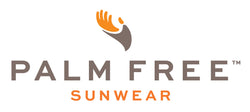Signs of an Aging Neck: How to Prevent and Improve the Aging Neck
When it comes to maintaining our youthful appearance, we tend to focus on the face. However, one glance at the neck and your age is revealed. This blog covers the signs of an aging neck, what you can do to reduce its appearance, what is preventable and treatable in a non-surgical way. More extensive, aggressive, and invasive/surgical treatments are beyond the scope of this blog.

Photo thanks to dermnz.org, poikiloderma.
The first clue of the aging neck is laxity: the skin sags, is loose or crepe-like and/or there is a permanent redness or a goose-flesh texture. The skin on our neck is thinner in front than on the back of our necks. Ultraviolet radiation penetrates deep into the skin damaging elastin, collagen and causes the capillaries to become more prominent. With elastin and collagen damaged our skin is flat, thinner and our pore structures more obvious causing that goose-flesh look. The visible capillaries at the skin’s surface giving us that ‘red-neck’ appearance, call poikiloderma (photo above). Interestingly, the skin under the chin is spared due to the chin always shading that part of the neck; like a baseball cap shading the forehead.

Photo thanks to Clinical Advisor, cutis rhomboidalis.
The skin on the back of the neck is thicker and takes on a different appearance with chronic sun damage. Deep lines start to appear in a wrinkled polygonal fashion (crisscrossing) giving one the ‘rough-neck’ appearance, called cutis rhomboidalis. This is mostly seen on men, however women with susceptible skin and long-term photo damage can exhibit this skin texture change as well.

NeckBlock.com
Prevention is always key. If you sport a short hair style and your neck is exposed, wearing neck coverage like high collars or a neck gaiter is an excellent way to protect your neck's skin. A new product on the market called NeckBlock is a fitted dickie-style sun protective accessory that is made with extremely lightweight UPF 50 fabric and covers the circumference of the neck with a skirt-like extension that covers the chest (a bonus). This provides excellent coverage while wearing polos or shirts with wide scoop necklines. NeckBlock has a form-fitted lightweight feel, you forget you’re wearing it. And if your sport demands a lot of movement, it stays put and doesn’t twist around. Sunscreens designated SPF30 or greater is another option, but this can get on your clothing or will need to be reapplied frequently due to sweating it off.

IPL treatment photo thanks to skiin.com.au
If the damage is done, its’ a good time to start wearing neck protection and use a moisturizer blended with a retinol product (like Roc Night-time AntiWrinkle cream) 1:1 to help smooth the skin and reduce that rough appearance. Non-surgical treatments include IPL devices to remove brown spots and redness, and other lasers and resurfacing treatments like the Halo and Fraxel can help with redness, skin color irregularity, texture and help firm the skin. Multiple treatments may be necessary, and downtime varies, however the results are impressive. Ask your local dermatology provider if they offer this service or can recommend a reputable medispa.
No matter where you are on the spectrum of mild to severely photodamaged skin of the neck, it is never too late to wear sun protection and moisturize your skin. Consistency in wearing protection as you enjoy your outdoor activity is vital in preventing more damage.
This blog posting is written by Dermatology PA Patricia Ferrer, Tucson, AZ.




